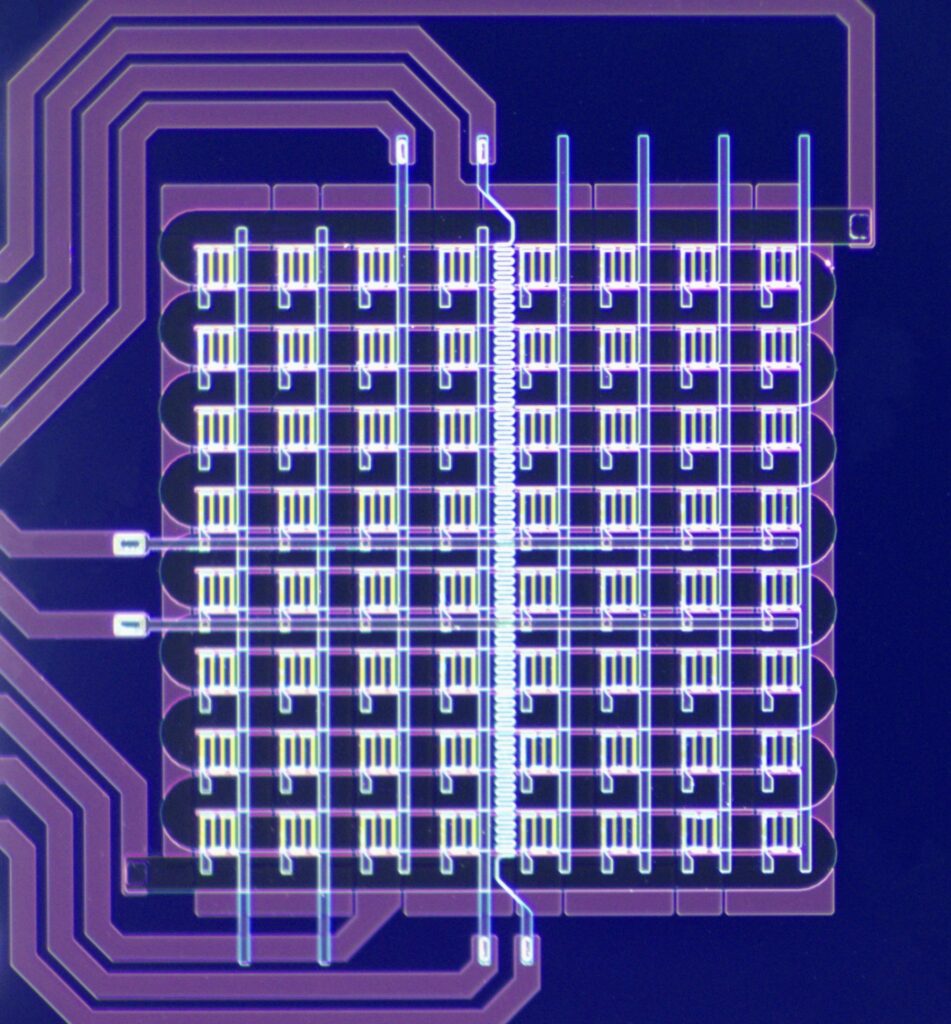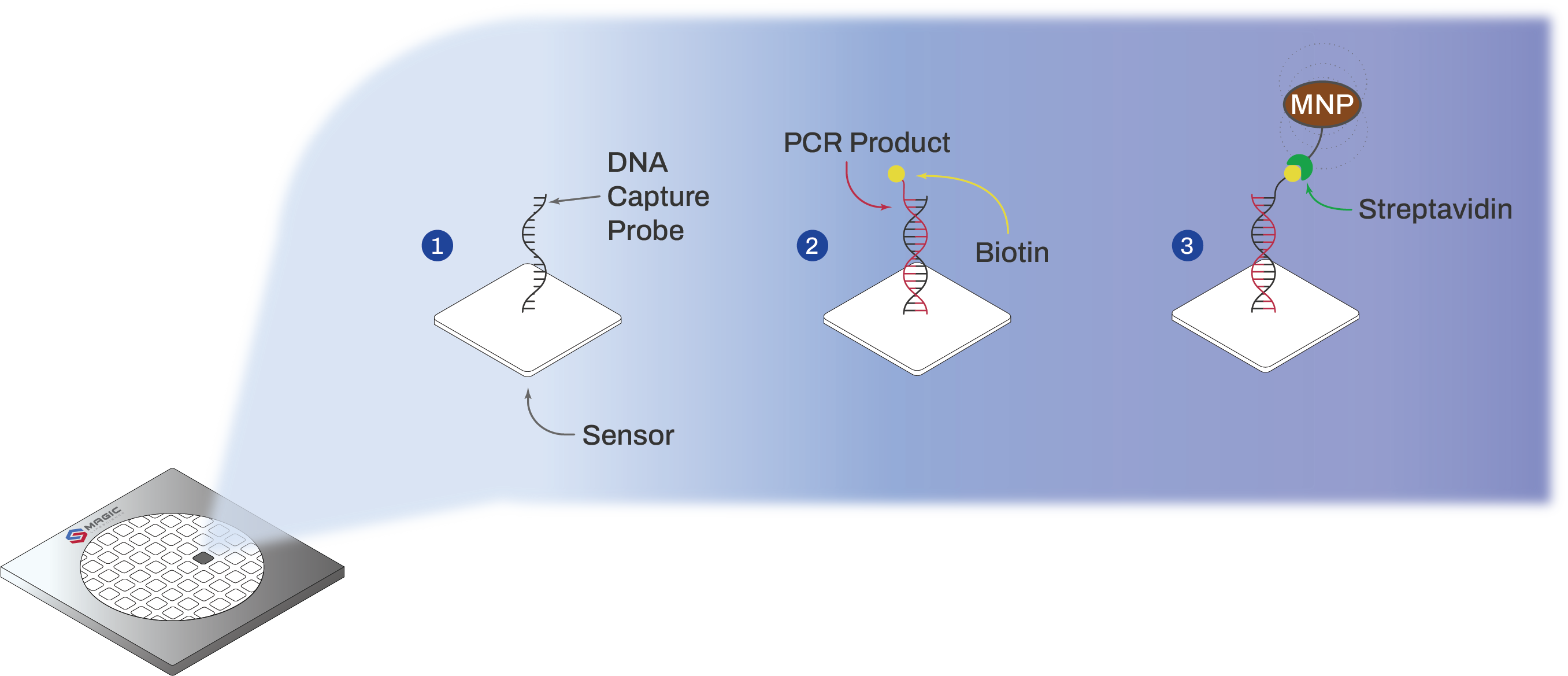We are leveraging giant magnetoresistance (GMR) to advance molecular diagnostics. Our GMR biosensors are the magic behind ultra-high sensitivity and multiplex capabilities.

Giant Magnetoresistance
64-sensor array
Substrate for multiplexed DNA hybridization
Similar to DNA microarrays
Local proximity magnetic sensor

This first-of-its-kind GMR technology enables an all-in-one workflow of performing multiplexed PCR and DNA detection on a single GMR sensor chip.
Elaine Ng, PhD, CSO Magic Lifescience
What is Giant Magnetoresistance?
Modern microelectromechanical systems (MEMS) fabrication technology
↓
Easy to make with high yield and low cost
Compatible with standard integrated circuit (IC) fabrication
↓
Processor and sensors can be miniaturized and integrated on one chip

Foregoing Fluorescence
Nano-materials, Big Solutions
© 2025 Magic Lifescience Inc
All Rights Reserved.
MagIC Lifescience, MagIC Lifescience logo, Creating MagIC®, MagChipR™, MagChip™, and Just Chip It™ are registered trademarks of MagIC Lifescience, Inc.
LBL-00002 rev A